 The first thing to greet me in the African day was my great friend, the African Black Kite, with a real and beautiful message.
The first thing to greet me in the African day was my great friend, the African Black Kite, with a real and beautiful message.
Category: BIrds
Vultures & Other Vermin
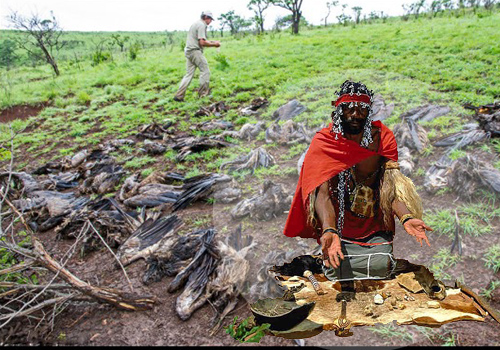 It’s been a generation or more since certain animals considered vermin were proudly exterminated in the U.S., and the concept of bounty on nuisance animals is in welcomed, serious decline.
It’s been a generation or more since certain animals considered vermin were proudly exterminated in the U.S., and the concept of bounty on nuisance animals is in welcomed, serious decline.
Rather, state governments have undertaken more scientific hunting seasons that try to achieve an ecological balance deemed appropriate. So, for example, this year Iowa added more hunting days for deer because the first “harvest” was considered too low.
I think this is rather presumptuous if not outright arrogant. Call a spade a spade.
Birdkey
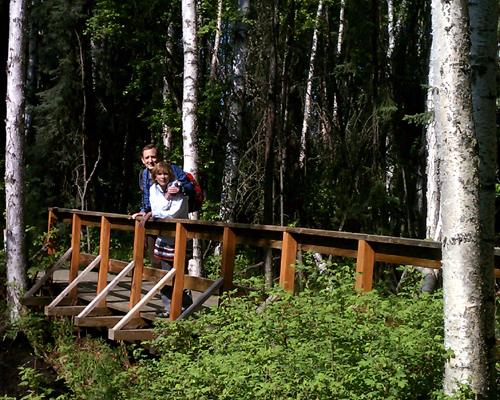
The reserve is a not-for-profit privately managed 2000 acres of wetlands, boreal forests and grass fields. This conjunction of varied ecosystems is unusual this far north and the much of the wetland portion actually dries up not too long from now.
Located just at Fairbanks’ northern perimeter and very close to the university, it’s a heavily used park and not just by birders. Joggers, moms and tots and dog walkers probably out number the birders, but it’s the birders who rule!
I went with Mark Ross, the resident biologist, on the annual “birdathon.” That’s a two-hour race through the area during which Mark tries to identify as many species as possible. The record for this time of year is 36.
That will sound depressingly small to those of us living further south, where I had just completed the breeding bird survey (in the northwestern tip of Illinois) and came up with 86 species. Actual bird censuses over the best of the migration could double both counts.
That still pales in comparison to what I normally see on a two-week East African safari where we normally easily identify over 300 species traveling through areas with a census of well over 700.

As you move south, the biomass grows denser. But what is so special about the Fairbanks reserve is exactly the opposite: here we’re hitting the limit of many inland bird species, and watching how their numbers alter over the years provides one of the fastest and truest glimpses of the health of the planet.
In Africa, Illinois and here in Fairbanks, this year is looking good. Fairbanks residents, for example, identified several birds in healthy numbers that are considered “concerned” species, including the yellow-bellied flycatcher and violet-green swallow.
We saw the swallow in fairly large numbers. This despite some horrible accounts of how the swallows were dying hardly a month ago because there was still so much snow in Fairbanks, which was unusual.
Fairbanks easily gets to 50 to 60 below, but is normally not deep with snow. It’s a dry, near desert environment. This year, however, there was lots of snow, and that wasn’t good for the early arriving migrants like the violet-backed swallow.
You’ve probably read about the heavy snow in other parts of Alaska as well. Last year, for example, the coastal community of Cordova at one point at 15′ of snow on the ground. Contrary to what most people in the lower 48 think, Alaska is not a place that historically records large snowfalls. That’s changing, because the world is heating up.
And how the birds respond to this is fascinating.
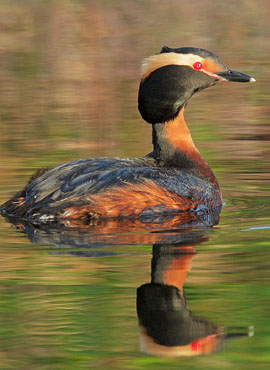
That’s kind of remarkable. We tend to think of bird migrations as an all-out effort from start to finish, with no real capacity to slow down or speed up. If Mark’s right, that notion is wrong and it could mean that birds are going to adapt to global warming better than the residents of Manhattan.
We had a great time in Fairbanks with some of the group taking the famous Riverboat Discovery cruise, and others visiting friends including Alaska’s longest serving judge who gave them a tour of her chambers here, and Christi and Ken visiting a distant nephew who is young but gold digging!
The town is filled with history, mired somewhat in its remoteness, and the last vestige of modern man before the great tundra and arctic beyond. We won’t go that way. We’re heading south.
To Denali! Stay tuned.
Killing Two Birds with A Bird
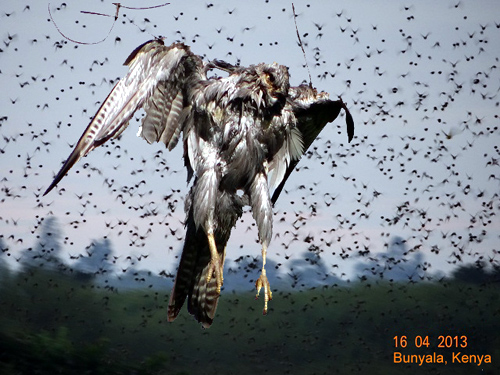 The great rice fields of western Kenya are ready for harvest. But the battle that will determine who eats the rice is only now playing out. It’s man versus bird, and the rules of engagement are not pretty.
The great rice fields of western Kenya are ready for harvest. But the battle that will determine who eats the rice is only now playing out. It’s man versus bird, and the rules of engagement are not pretty.
This is such a perfect example of the folly of man trying to tinker with nature. I’ve seen it play out time and again in America mostly by campaigns against “invasive species” which have essentially proved laughably unsuccessful.
But a time comes when human society gets itself properly organized and funded, to do such things as eradicating malaria, and then the consequences are considerable:
The eradication of malaria, typhus and other mosquito vector human diseases was successfully accomplished in America by the end of World War II through the use of DDT. The ramifications of that continue.
We all know about the near extinction of the bald eagle, and how DDT so weakened the outer shells of bird eggs that many species were threatened. But the effect on the environment was much greater than just an effect on avifauna. Scientists continue to argue, today, that DDT is a carcinogen that effects a wide range of species, and will do so for centuries.
But it did succeed in accomplishing its mission. Although there’s some concern malaria could reappear in America, today, because of global warming, certainly we can conclude that America has been essentially malaria-free since the 1950s.
So it is a cost-benefit argument. Today, most African governments argue that DDT should be allowed greater use than current world treaties allow. Today the use of DDT in Africa “within confined buildings” is allowed, but the widespread spraying that effectively ended malaria in the U.S. outdoors is prohibited.
This weekend a conservation organization working in western Kenya reported that the raptors it works to protect were being poached then preserved as scarecrows in order to protect rice fields from a pestilent bird, the quelea.
An important UN agency calls quelea “Africa’s most hated bird.”
The small, sparrow-like creature lives in enormous flocks. On my last safari about a month ago we encountered them just as they began to nest in Tarangire National Park. It’s as thrilling a sight as spotting a leopard in a tree.
The “mumuration“ of quelea is not unique. Many birds do this, though most simply as a precursor to mass migration. The quelea does it … to eat.
The dark clouds of quelea descend on farmer’s fields more powerfully than locusts, and a 10-acre rice field can be laid bare in an hour.
Consistent with nature’s laws, as more and more farms in Africa concentrate grain production like rice and wheat, and as the equatorial regions of Africa get wetter with global warming and these fields grow larger…
…so do the flocks of quelea.
Farmers in western Kenya have found a deterrent they like. Poach a raptor that eats quelea, and hang it in the field preserved.
A live raptor makes a kill and is satisfied for a whole day. Its effect on mumuration is short. A scarecrow raptor – at least so far – produces a longer effect.
Of course there’s no reason not to believe the quelea will pretty quickly learn how they’ve been tricked. But for the time being, it seems to work.
And so … raptors are now threatened. And the easiest way to kill a raptor today in western Kenya is with the easily obtained, relatively inexpensive and terrifying pesticide, Furadan. I’ve written about this scourge in western Kenya, before.
It’s particularly aggravating because the drug is American made and marketed, but banned here in the U.S. That’s a global disconnect I feel verges on racism.
Because we’re using Kenya as an experiment, again. Just as we do for human medical drugs. As if this is a dispensable part of god’s kingdom.
My greater point, though, is that it won’t work. Nature can’t be bullied. We can’t tinker with nature, whether it’s trying to remove garlic mustard from prairies or kudzu from highways or curing bees of a virus or massacring deer to end CWD.
It doesn’t work. It never has.
We must learn in this world to accommodate nature not try to control it. I don’t for a minute suggest we shouldn’t battle locusts over millet fields in Senegal or quelea over rice fields in Bunyala.
But the battle must be with nature’s own. An organic battle, if you will. Or at the very least a much more highly regulated pesticide industry: Pesticide use today is out of control and dangerous to humankind. Furadan is devil’s brew.
And Bunyala is no less important than Iowa.
On Safari: Moremi Game Reserve
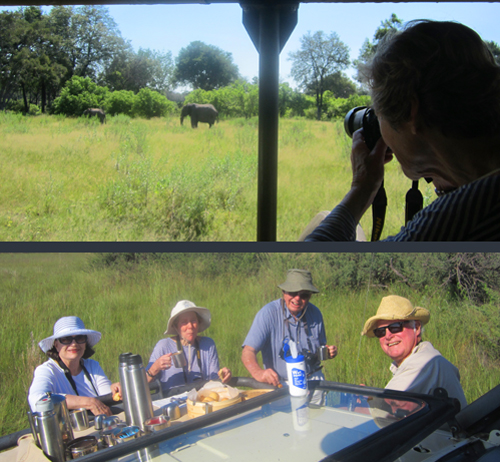 On the drive from Chief’s Camp airstrip we saw elephant, kudu, hyaena, impala and giraffe. That took about 30 minutes. The Okavango Delta at this time of year is truly magnificent!
On the drive from Chief’s Camp airstrip we saw elephant, kudu, hyaena, impala and giraffe. That took about 30 minutes. The Okavango Delta at this time of year is truly magnificent!
The veld is beautiful right now. Everything is lush and green. It’s a bit late for the blooming trees and flowers, although I did see one acacia still flowering and a beautiful wild iris of the most delicate pink color seen from time to time throughout our drives.
The juvenile carmine bee-eaters are just getting their full color, and the migrants – like the yellow-billed stork – are still here in large numbers, so to a certain extent we’ve got the best of both seasons as far as birding goes.
It’s the end of the Delta’s summer, temperatures today began in the mid 70s and would rise throughout the day to nothing more than the upper 80s. A huge cold front has moved into the southern part of the continent, so we were lucky. But even without this front, it would hardly be ten degrees higher.
The highlight for me on the morning drive was seeing a pair of wattled cranes. These magnificent birds were almost extinct less than a decade ago, and according to the Wattled Crane Rescue Foundation there are now 235 in South Africa. (There are no good number estimates for Botswana, but I imagine it’s higher.)

The crane was challenged by what challenges most of Africa’s wildlife, today, growing human settlements, and in particular, power lines. Baby wattled cranes fly up to six weeks before they can walk, so if knocked out of the sky on their juvenile flights, they’re often doomed.
Like whooping cranes and California condors saving the crane fell to a consortium of private groups which raised the funds and enthusiasm for a sustained recovery effort that began with collecting eggs and raising chicks in safe facilities for later reintroduction.
Fortunately, normal behavior of the crane is to lay two eggs but to raise only one chick, so pilfering the nest of a single egg had little impact on the status quo.
Always a highlight is the incredible numbers of elephant, everywhere. Today we encountered 20-30 on the drive of all ages, and several groups of large males. During lunch at Chief’s Camp everyone was treated to 24 elephant in two families and a male following at some distance.
They moved into the swamp behind camp and found a channel where they watered and played, and then a secondary mud hole where the young especially spent a long time rolling and playing. It was an extraordinary course to an otherwise exceptional meal!
We’re here at Chief’s for three nights. Stay tuned!
Greyed Out Bird
 I am a loving pet owner. But I would never imprison a wild animal and then call it a pet. African Grey Parrots belong in the wild, not in a cage.
I am a loving pet owner. But I would never imprison a wild animal and then call it a pet. African Grey Parrots belong in the wild, not in a cage.
The majority of African Greys kept in the United States may have actually been born in captivity. In a sense they were manufactured to be pets; they’ve never soared over Africa’s great forests.
But be that as it may, are you sure that your bird was captive bred? And even if it truly was, do you realize that your keeping the bird in a cage is contributing to its extinction in the wild, where it much more truly belongs?
There are many as 30,000 loving owners of the Grey Parrot (Psittacus erithacus) in the United States, which for the first time this year was listed as “vulnerable” by the scientific organization (IUCN) used to determine which animals are in danger of extinction.
If the decline in the African Grey Parrot continues, and if the IUCN ultimately classifies it as “endangered” and if the CITES convention then adopts its recommendation, international trade in the bird would stop.
But the politics involved in this would be extraordinary. So there is real concern that at the point the bird is classified as threatened, it will be too late.
The IUCN explains the rapid decline in Africa’s most famous parrot because “It is one of the most popular avian pets in Europe, the United States, and the Middle East due to its longevity and unparalleled ability to mimic human speech.”
IUCN says that over the last 30 years “a million birds” may have been removed from the wild in Africa. Most of these are removed illegally, although a good portion have been captured on licenses given by corrupt African governments.
The market in the U.S. has existed for decades, but a new and vibrant market in China has also emerged as a result of China’s increased wealth. And unlike the U.S. and Europe, there are no laws in China that restrict the importation of wild birds.
Today, an African Grey Parrot in the U.S. sells for an average of $1,000. Good statistics are not available, but successful breeding of captive African Greys is a very lucrative business. Reputable companies like PetSmart routinely sell them, and eBay and Amazon both offer them.
But since there is no exact certification of what is truly a captive-bred bird, it’s likely today that many are illegal imports.
Many of these birds are smuggled out of Africa through poorly monitored ports like Windhoek, Namibia. Last week the Namibian Avicultural Association adopted new rules to try to stem the flow of illegal birds through the country.
The association claims that bird dealers in the country “do not seem to know that buying a parrot without [proper certification] may represent a bird that has been illegally caught in the wild.”
Like outright poaching, I can sympathize with Africans desperate to make a day’s wage, and capturing birds isn’t as difficult as it seems. On the Windhoek black market as throughout Africa, National Geographic estimates the poacher receives about $30 a bird.
The African middleman who pays the poachers smuggles the birds out of the country in horrible conditions. The majority die in crowded and dirty little containers that may have squashed hundreds of birds. The African middleman likely earns around $50 per bird.
The birds that survive the smuggling are taken by wholesalers in the U.S., Europe and China that launder their origin and sell them to companies like PetSmart. The wholesaler probably makes $300-500 per bird.
So while I can empathize with the poacher, it’s not possible to condone the knowingly illegal work of the middleman.
Ultimately, this horrendous trade will stop only when the market stops. Without a listing by CITES as endangered that’s impossible in places like China.
But at here at home and in Europe, let common sense prevail. Get a dog.
Biggest! Strongest! Smallest!
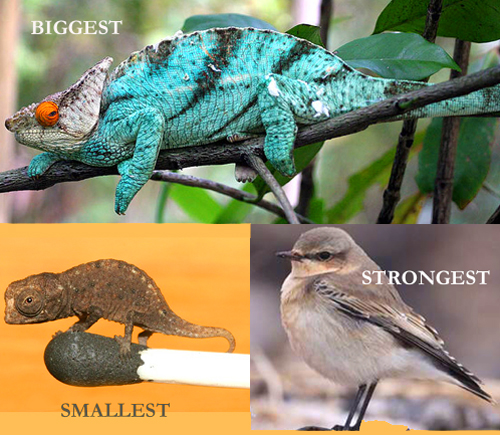 A ridiculously small, and a ridiculously large chamaeleon and a ridiculously strong little bird. Africa at its best!
A ridiculously small, and a ridiculously large chamaeleon and a ridiculously strong little bird. Africa at its best!
I have personally seen the northern wheatear breeding in Alaska and foraging in Africa, and we’ve not known until now where the Alaskan birds migrated. That’s because there are wheatears in eastern northern Canada and even Greenland and Scotland.
Most bird migrations are determined in a pretty easy way. The bird is banded and then it’s found where it’s migrated to. And dozens and dozens of wheatears have been banded, but they’ve never been found.
That wasn’t actually unimaginable with regards to the wheatear. Unlike most species of bird, the wheatear breeds over a massive portion of the northern hemisphere and there are lots of them. So the odds of a banded bird being found were greatly reduced.
But technology to the rescue! The bird is so small, .8 ounce, that anything other than a light-weight leg band could not be used for tracking, until scientists recently concocted a really itty bitty geolocator hardly heavier than a band. And that’s where this data comes from.
There’s a real surprise, too. The birds in Alaska travel west to Africa. The birds in eastern Canada travel east. The route from Alaska to Africa is impressive: nearly 20,000 miles roundtrip! The eastern migration is half that, but it has to cross the Atlantic Ocean, the world’s most turbulent sea.
So either way around this you’ve got a remarkable little African bird! (Well, it’s also an Alaskan, Canadian, Greenlander, and British Isles bird, too.)
Note: the birds with the longest migration (approaching 50,000 miles) are the arctic tern and winged albatross.
The other fabulous African nature news this week was of still more treasures from Madagascar. We’d already found the world’s largest chamaeleon there. Parson’s chameleon is the size of most cats! Now this week scientists announced the discovery of the world’s smallest chameleon. It can fit on a matchhead!
What is really amazing about this, actually, is that these two creatures from Madagascar although definitely both chamaeleons in many common ways, are probably very different and likely have extremely different evolutionary paths.
Their point of last convergence could conceivably be at the dawn of reptiles, meaning more than 250 million years ago! The fact that they then physically changed so little except in terms of their size, likely has something to do with the special island-continent ecology of Madagascar. Island systems provide narrow paths for evolution, encouraging speciation but then subsequently constricting radical divergence.
On safari we usually find a chameleon or two and always some type of wheatear (there are several). Along with the new snakes and new primates and primate behaviors discovered recently in Tanzania, we’re learning that Africa has much more to reveal than we ever thought before!
Our Most Brilliant Traveler
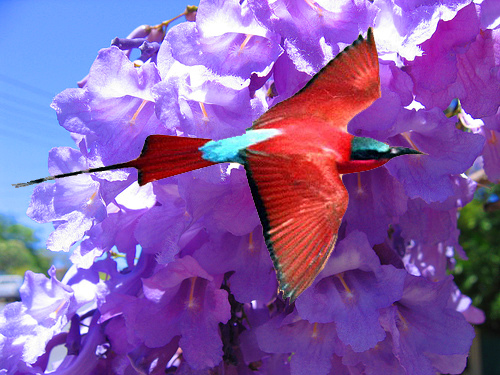 I sit here watching a miserable cold rainy day waiting for snow. Birds (and “sunbirds”) living here in the Midwest have all but gone. But one remarkable bird in southern Africa defies this classic “going and coming” in a most spectacular way!
I sit here watching a miserable cold rainy day waiting for snow. Birds (and “sunbirds”) living here in the Midwest have all but gone. But one remarkable bird in southern Africa defies this classic “going and coming” in a most spectacular way!
The southern carmine bee-eater is not only one of the grandest and most beautiful birds in existence, but it defies all notions about what bird migration means. Right now it’s heading south, but in hardly a few months it will head north further than where it started from! Then a few later, west, and finally, east! It zig-zags in a definite way, but why?
Conservationists tend to think of bird migrations as one-way reversibles. In other words, at one season they travel thata-way, and on the other season, they go thata-way backwards! Well that’s mostly true, and it seems to us that the birds are following the weather. We think, for example, that cardinals own fur coats but that little warblers would just freeze to death if they stayed.
Wrong. Temperature has absolutely nothing to do with where a bird wants to be. Birds follow their food. Reductions in temperatures reduce the food supply for many birds, like warblers eating bugs. But cardinals don’t eat bugs; they eat seeds and berries, and they’ve adapted to finding them even in the snow.
The carmine bee-eater’s there-again, back-again migration is linked in the same way. The bird is a specialist: it eats bees and other flying insects, and in southern Africa flying insects – particularly bees – are very much linked to when it rains. And the rain pattern in the southern part of the continent as I often explained is very complex.
And to make matters more extreme, the carmine nests in burrows of sand often on flat sand banks, digging a tunnel up to 6-feet long in which to lay its eggs. You can imagine this would not be an ideal strategy if it were raining.
So breeding occurs at the driest of times, along the great southern rivers like the Zambezi and Kavango, in August and September. There’s no drier time anywhere in southern Africa.
Eggs hatch, chicks emerge, rain comes, bees flourish all up and down the Zambezi as the ground bushes and native flowers in particular bloom presaging honey. But this doesn’t last long, because the rains grow intense, the temperatures rises, and many of the species of plant flower for a very short time and then just blossom out in bushels of thick green foliage.
So now in November the carmines move south. It’s probably started to rain south in South Africa by now, but down there many of the flowering trees like the jacaranda bloom before heavy rains, unlike the bushes along the Zambezi, and this attracts billions of bees.
One of the most beautiful sites on earth is the carmine bee-eater flying around a purple jacaranda tree! Its mostly crimson body blends into a deep teal head and underside, and with a sea-faring like deep black bill more normally associated with terns.
OK, so it’s spectacularly beautiful, but that’s not all. Its flight is magical. It’s in the class of birds that, true to name, eat bees and other flying insects. It plucks its prey right out of the air, nabbing that darn honeybee while it’s in flight.
This leads to all sorts of gymnastic swoops and backups, sometimes seeming to turn 180-degrees in midflight. And it seems to use its wings very little, a sort of effortless soaring that with a few facile flaps turns it upside and backwards, or sends it in exactly the opposite direction.
But one of the most amazing things about this bird is its migration. So right now it’s in South Africa with its new fledglings doing a job on the jacaranda. That only lasts a few months, and heavier rains and other factors bring much of South Africa out of bloom by February.
The fledglings are then fully grown. The birds actually maintain social groups even while migrating, and the young boy carmines have stayed with their mom and dad, and the girls have gone off to another group. And they get ready for the big migration as the flowers fall in South Africa.
They now travel long distances, sometimes right up to the equator. That’s nearly 2500 miles. I’ve seen them around Lake Victoria in February and March.
February is the lull in the single rainy season throughout most of East Africa. It’s actually more than a lull in Kenya, where it becomes completely dry, but I’ve only once seen a carmine north of Nairobi, and that was a single so obviously errant bird.
The lull in the heavy rains allows so many plants to bloom! In East Africa it isn’t just bushes but trees as well, and sometimes the many varieties of acacia will actually bloom a second time (most acacia bloom just before the rains begin in December and January).
So, lots of bees.
The rains end earlier in southern Africa than East Africa, so the carmines stick around in East Africa until like the wildebeest they’re forced to move because it gets bone dry. Wildebeest move north; carmines move south.
The carmines have 2-3 months now of little pickings, but there’s enough. Flying insects other than bees become their main diet, and there’s enough to build a new home and have new chicks.
In the end, the carmine has traveled as far as many of the longest distance warblers. It’s just not up and down, but a zig-zag through the remarkable ecology of this magical continent.